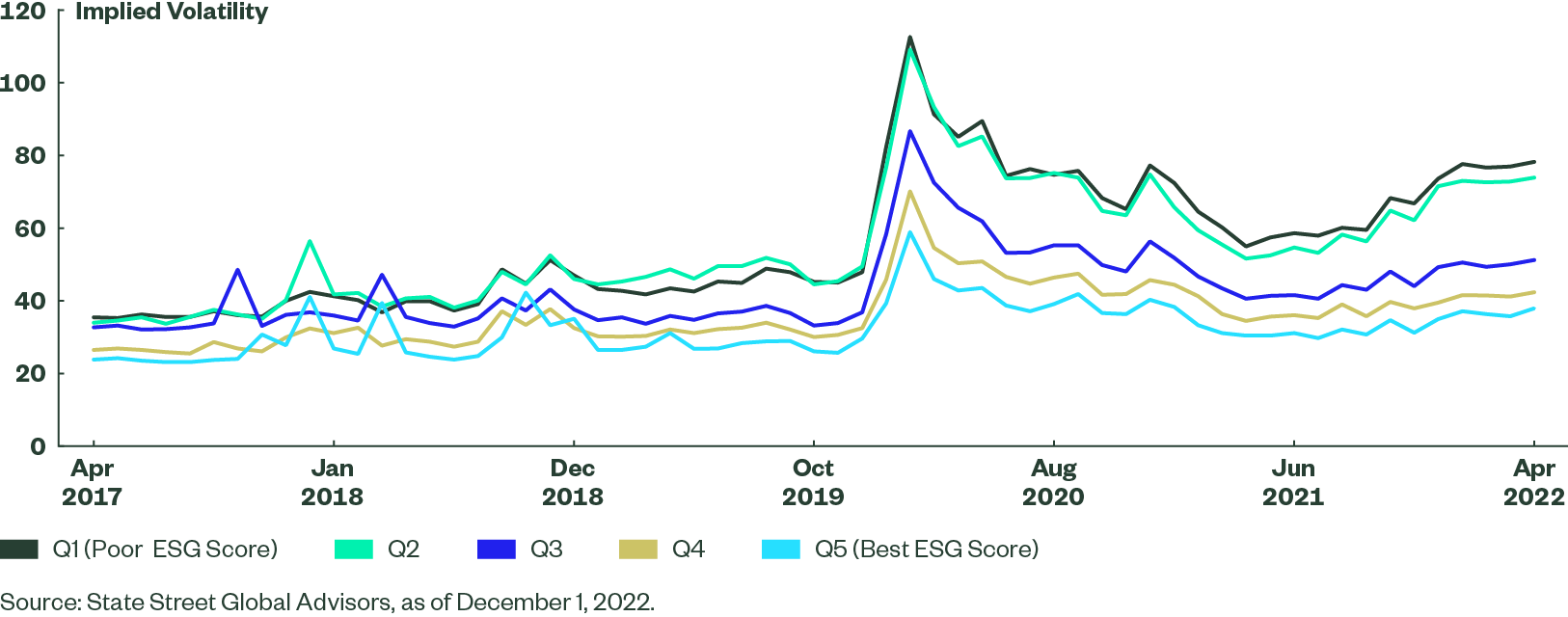Exploring the Link Between Stock Price Volatility and ESG Scores
One of the most pressing investor questions is how environmental, social, and governance (ESG) risks translate into performance volatility for individual stocks. In this article, we tackle that question using the State Street Global Advisors proprietary ESG framework, R-Factor™.
To date, the literature on ESG has largely focused on the impact of ESG exposure on returns, and little has been done to directly assess the impact on risk. If we consider risk as any form of uncertainty, and further recognize that ESG by its very nature is influenced by corporate activities that impact stakeholders, then it stands to reason that there is a direct link between the management of the dimensions of E, S, and G, and the range of potential impacts on stakeholders. We then posit that companies neglecting to manage their ESG exposures may be exposed to higher future risk — particularly stock price performance risk — than their more ESG-focused counterparts.
We used our proprietary R-Factor™ scoring model to break a large universe of stocks into top- and bottom-ESG quintiles, and we took a data-driven, closer look at the relationship between ESG and volatility.
Figure 1: Implied Volatility Is Higher for the Bottom ESG Quintiles

Our data also shows that companies with better ESG performance are more resilient in high-volatility environments.